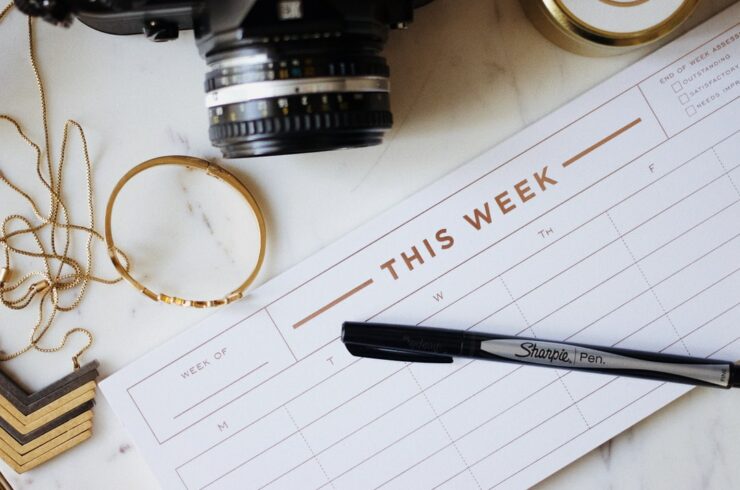A timecard is a chart that records the time you have spent on tasks or projects, later submitted to your employer for their records and your pay. Keeping track of the hours you work makes billing easier for yourself and your company.
Tracking hours also helps keep you on task by giving you an overview of what needs to be done. If there are too many hours leftover in one day, you know that you need to cut some things out. If there are not enough hours left for what is left to accomplish, then you can rearrange your schedule or ask someone else for help.
This article will discuss how to create an effective timecard, some of the benefits of having an effective timecard, and some tips to fill out your timecard more efficiently.

First of All, Why Do I Need an Effective Timecard?
Having an effective timecard is the best way to ensure that you are working efficiently. If there’s a lot of time left over at the end of a day, then it means that you have a lot of tasks piled up and need to either break them into smaller, more manageable tasks or ask for help.
An effective timecard can also make billing easier for you and your company. For example, knowing how long each task took makes it easier to bill by the hour or per project. You also have a record of what was done so that you can refer back to it if needed.
Another benefit of having an effective timecard is that it can help to keep you on task. It becomes easier not to get sidetracked by other things by seeing what is left to do.
You’ll know what to improve and develop with an effective timecard, which is crucial in performance management.
Some Benefits of Having an Effective Timecard:
- It helps you save time
- It makes billing easier for both your company and yourself
- It keeps you on task, so you don’t waste time
How to Create an Effective Timecard
Now that you know why you need an effective timecard, it’s time to learn how to create one!
An effective timecard has some key components, like dates of work, the title of the tasks or projects being worked on, and how many hours are spent on each project.
There are also a few optional components that you can include on your timecard. These are:
- Notes about the work being done
- Breaks or lunch
- Travel time
- Overtime
- Etc.
Make sure you write down or keep track of how much time you spend when you work to find what to improve on to become more productive. Then, if you want to be EVEN more effective, consider the tips presented below.
How to create an effective timecard:
- Determine the Hours You Want to Track and the Purpose of Your Timecard
- Set Up a Spreadsheet with Columns for Date, Time, Task, Notes, Etc.
- Create a Chart That Shows Your Total Allotted Time Per Day by Week
- Keep Track of How Much Time You Spend on Tasks
- Update Your Spreadsheet Daily
- Review Your Charts Weekly to Improve Yourself
Determine the Hours You Want to Track and the Purpose of Your Timecard
First, you need to decide how many hours per day you want to track. The hours you track are up to you and your personal or professional goals. This could be two hours a day or ten! It all depends on what work you do, how much time it takes, etc.
Then, you can determine the purpose of your timecard. The purpose of your timecard can be anything, whether it is to have more time for yourself or be more productive at work. Once you decide, it’ll be much easier and more effective.

Set Up a Spreadsheet with Columns for Date, Time, Task, Notes, Etc.
If you’re more of a visual person or like to keep things organized in this way, then set up a spreadsheet for yourself. You can list the date, time, task, and any notes that you might want to include. Keeping this information is also a great way to keep track of overtime hours worked.
If you prefer to use a journal, just keep track of the tasks worked and how many hours were spent. The title should be the project or task that you are working on so that it is easy to find out what needs to be done next.
Create a Chart That Shows Your Total Allotted Time Per Day by Week
If you are the kind of person who likes to see things in an organized chart, this is another excellent option. It is also helpful if there are others (managers, co-workers) that need to know how much time you spend on tasks.
The first column shows each day of the week, so the days you are working are readily visually available. The second column is for hours allotted to that day. Finally, the third column is for the total time spent on that day. A chart like this can be useful if you want to know how much time you’ve spent on a task for a week, month, etc.
Keep Track of How Much Time You Spend on Your Tasks
Keeping track of time spent per task is crucial, even according to Forbes! And of course, since we are learning how to make a time card, we should be invested in doing it efficiently.
The easiest way to track your time is to simply write it down as you go. This can be done in the modern or traditional way (whichever you prefer!). Then, list the date, time started, and time stopped for each task. Doing so will help you keep track of how long each task took.
If you’re using a spreadsheet, then it’s easy to keep track of the time spent on each task. Just input the date, start time, and end time. Then, the total amount of hours will be calculated automatically.
Update Your Spreadsheet Daily
Update your spreadsheet to show how much time you spent at the end of each day. If you’re dealing with multiple projects or are just starting, it’s essential to have all of that information ready for review.
This can be done by either adding up all the times at the bottom of your list or entering them into a table. You can also add some notes to the tasks you’ve completed, so it allows more insight when you look at it later.
Review Your Charts Weekly to Improve Yourself
After a week of tracking your time, review your charts to see how you did. If you’re not happy with the results, then it’s time to make a change. For example, maybe you need to work on your time management skills or finish tasks earlier in the day. Whatever it is, use this data to improve yourself and work more efficiently.
For example, let’s say that this week you only worked 7 hours on Monday and had to stay late every other day. Then, on Wednesday, it says that you spent 5 hours working and didn’t stop until 2:30. After realizing this, you can figure out what went wrong and learn from it next time.
More Tips for Filling Out Your Timecard Accurately and Efficiently
Now that you know how to create an effective time card, we have a couple more tips for you to do it accurately and efficiently!
- If you’re working on a project that will span over multiple days, then make a note of it and include the estimated hours for each day.
- Make sure to list all the tasks you worked on, even for just a few minutes.
- If you’re not sure how much time you spent on a task, make a note of it. You can always add up all the other times and get an estimate.
- Have your timecard ready, so you don’t forget to fill it out.
- Use fast and efficient time recording methods.
- If you’re using an excel spreadsheet, you can input formulas that calculate how much time was spent on each task.
- You can also use it as a to-do list and schedule your time accordingly.
- List projects you are currently working on and any notes associated with them (i.e., how long each task should take).
If you follow these tips, filling out your timecard should be a breeze!
Conclusion
An effective timecard accurately reflects the hours an employee has worked. It should be easy to use and understand, including all pertinent information.
Supervisors and employees alike should be able to use it to track hours worked and calculate paychecks. In addition, you must make sure timecards are kept up-to-date and that your employees are keeping accurate records.
Platforms like Day.io can help you keep track of your timecard, as well as other aspects of your work life. With its easy-to-use interface and helpful tracking tools, you can ensure that your timecard is always accurate and up-to-date.
For more time management tips, check out our blog!

